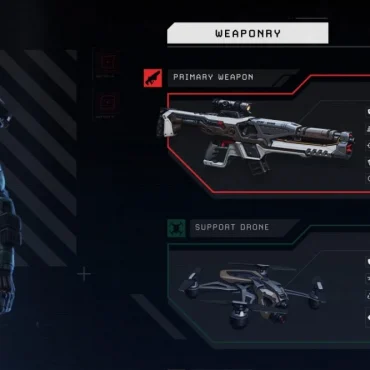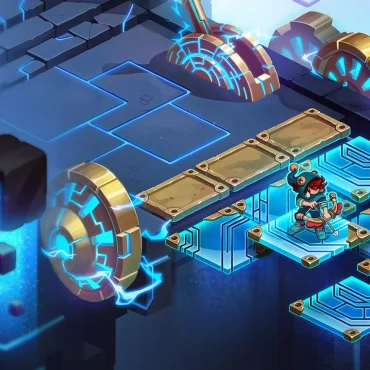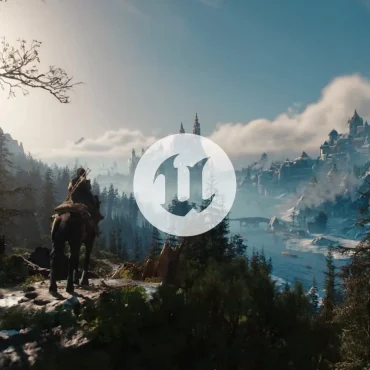Despite some turbulence in recent years, the global games market continues to grow. In 2023, mobile game revenues reached nearly $93 billion, followed by console gaming at $53.1 billion and the PC segment hitting close to $40.4 billion. Having a game available on multiple platforms not only taps into these substantial revenue streams but also offers significant advantages. If you already have a game on one platform, it’s time to consider game porting. This article will explore the benefits of porting solutions, the detailed porting process, and the unique challenges developers may face in making their games accessible across various platforms.
Reasons for porting
One of the main reasons to consider porting a game is to expand your audience. As a game creator or investor, you want the game to reach as many players as possible. By being available on multiple platforms—be it PC, console, or mobile—you can significantly increase your game’s audience. For instance, a game exclusive to PC could potentially double, triple, or even increase its player base tenfold by including console and mobile platforms, depending on the game and its target demographic. Reaching more players means more revenue and a larger community to support the game.
Another benefit of porting video games is the extended lifespan it brings to the original game. Releasing your game on a new platform can spotlight your title on digital store pages again, effectively giving your marketing efforts a fresh boost. This can not only drive sales on the new platform but also reignite interest and sales on the platforms where the game is already available.
Game porting companies often start by focusing on porting games from PC to console, especially for smaller indie games. This is because initial development is usually faster on PCs, allowing developers to run the game on the same machines they use for development. Additionally, the requirements for releasing on PC are typically less stringent than on consoles. Many indie developers lack access to console development tools and hardware, making the PC their default starting point. By leveraging advanced porting solutions, these developers can expand their reach and maximize their game’s success across different platforms.
Types of game porting based on platforms
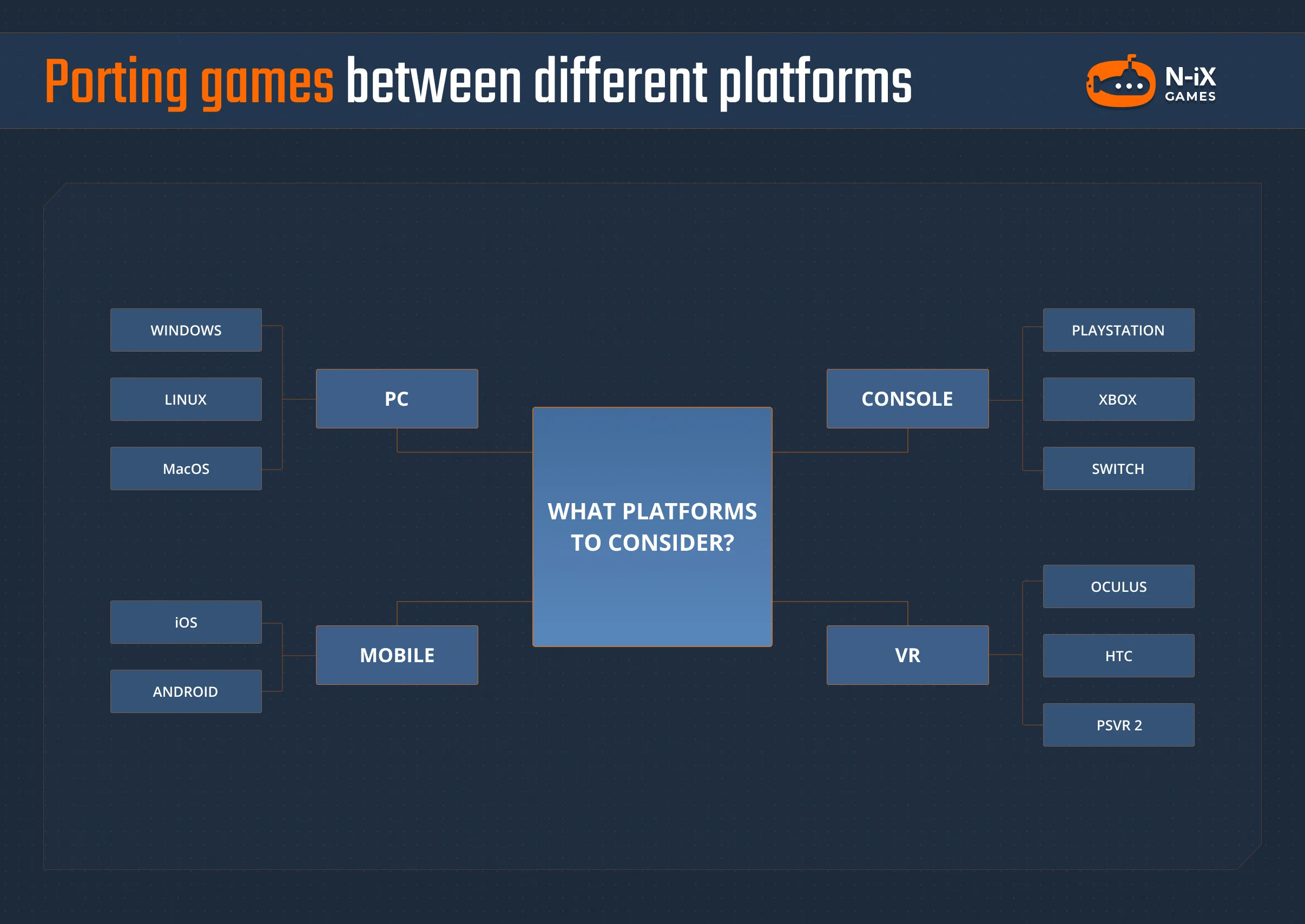
Porting from PC to consoles, and vice versa, is the most common porting that immediately comes to mind. It involves optimizing games for different hardware specifications and control schemes of each console. This transition requires adjustments in graphics, performance, and input methods to match the capabilities of each console, but it is still a relatively smooth transition since last-generation consoles are powerful and can perform on par with PCs.
Porting to VR devices and mobile often requires a more drastic approach to optimization and input adjustment. The mobile game audience is vast, and mobile games generate the highest revenues compared to other platforms. VR devices are still in an area of uncertainty and do not have a huge audience, but you can still give your game a completely new life and new audience by porting it to VR. Take notes from Bethesda with their Skyrim and Fallout 4 ports.
Porting games into different technologies
Beyond platforms, another dimension of porting solutions involves changing the underlying technology or game engine. Some common scenarios include:
- Porting to Unreal Engine: Unreal Engine, primarily utilizing C++, is versatile for console platforms, PC, and mobile game development. Game porting to Unreal Engine is beneficial for its robust tools and extensive platform support.
- Porting to Unity: Unity uses C# and is ideal for both 2D and 3D game development across a range of platforms including web, PC, mobile, consoles, and AR/VR. Video game porting to Unity is often favored for its flexibility and strong developer community.
- Porting to HTML5 and JavaScript (Web): When studios aim to release a web version of their game, they often port from languages like C++ or C# to JavaScript or HTML5. This enables them to reach a broader audience directly through web browsers.
The need to port to engines like Unreal Engine or Unity usually arises when a game was initially developed using older mobile SDKs, other game engines, or for web platforms. It also becomes necessary if the original SDK is no longer maintained or if the game owners seek the enhanced monetization and multi-platform opportunities offered by these modern engines.
How does game porting work?
The process of game porting is highly technical and demands a thorough understanding of both the target platform’s hardware and software. Porting specialists must also have an in-depth knowledge of the original game code to make necessary adjustments and optimizations. This often involves reworking the game’s codebase, adapting graphics and controls, and ensuring seamless performance on the new platform.
Essentially, porting a game is like tailoring a suit to fit a different mannequin perfectly. It requires a meticulous approach to ensure that every element functions flawlessly. Utilizing expert porting solutions can significantly simplify this complex process, ensuring a high-quality porting experience for any game.
Porting process
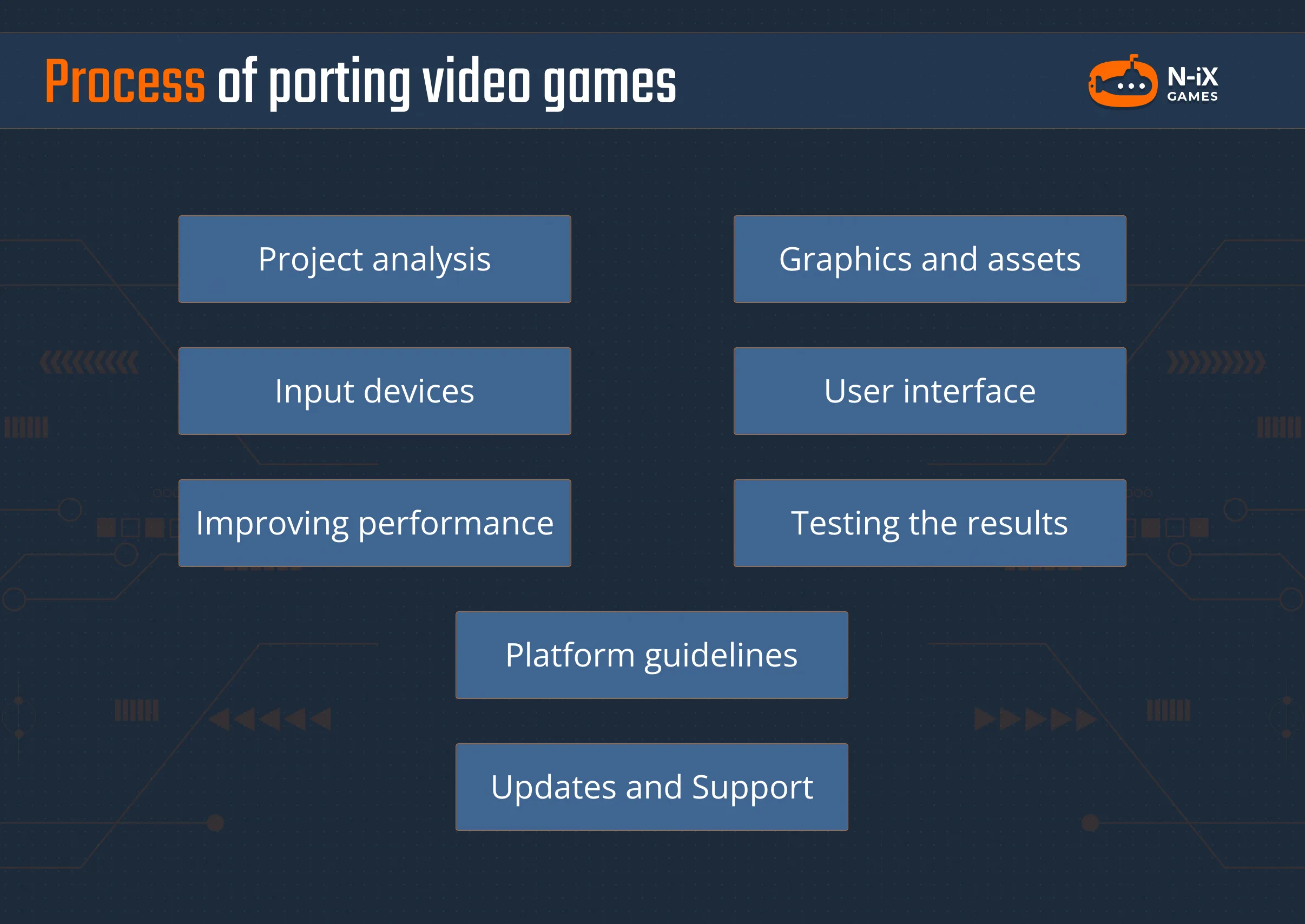
Porting video games involves several stages, each requiring substantial technical expertise. Let’s break down this process step by step.
Project analysis
The first step in game porting is a thorough project analysis. This involves examining every aspect of the game, including the code, graphics engine, and assets. The goal is to understand the game’s architecture fully. This comprehensive review helps determine the porting complexity by identifying any potential hardware and software challenges associated with the new platform. Anticipating potential issues early on enables developers to formulate solutions proactively. Additionally, assessing the specific needs of each targeted platform during this phase allows for more accurate planning of resources, timelines, and technical requirements, ensuring a smoother porting process overall.
Updating the code
Updating the code is often necessary when porting older video games to modern platforms. This task can involve significant modifications or even complete rewrites, especially when transitioning to updated engines like Unity or Unreal. Although technological advances are narrowing the gap between original releases and ports, each platform still presents its own unique coding challenges that must be addressed. These adaptations ensure compatibility with new hardware features and software environments.
Graphics and assets
When porting a game, visual elements like graphics, textures, and UI heatmaps must be optimized for the new platform. Adjustments in resolution, aspect ratios, and other visual components are necessary to align with the target hardware’s capabilities and constraints. This optimization process not only ensures that the game looks and feels right on the new platform but also maintains the visual integrity and artistic style of the original game. Additionally, in some cases, assets may need to be redesigned to take full advantage of the new platform’s graphical capabilities.
User interface
The game’s user interface often needs a redesign to be functional on the new platform. This involves adapting menus, HUD elements, and control schemes to suit the requirements and input methods of the new platform. Consistent design and functionality are essential to maintain the game’s integrity while ensuring ease of use for players. Additionally, UX considerations might include the layout and interaction patterns specific to the new platform, such as touch gestures for mobile devices or button mappings for consoles. Prioritizing these elements during the porting process ensures that the game remains intuitive and accessible.
Input devices
Different platforms come with varied input methods like keyboards, controllers, touchscreens, and motion controls. Porting a game requires adjusting or rethinking the game’s control schemes and gameplay mechanics to accommodate these diverse input methods. The goal is to ensure a seamless user experience, regardless of the device used on the new platform. This may involve reconfiguring control mappings, adjusting sensitivity settings, and developing new input handling routines.
Improving performance
Improving performance is crucial, especially when porting a game to a less powerful platform. This involves balancing graphic quality and performance by adjusting textures, reducing on-screen elements, and tweaking draw distances. Performance tuning is a delicate process that requires careful analysis and iteration to achieve the best balance between visual fidelity and system demands. Additionally, optimizing load times, memory usage, and frame rates are key factors that contribute to the overall playability and enjoyment of the game.
Testing the results
Testing is a critical phase in the video game porting process. Every change must be rigorously tested to ensure it works correctly. Performance tweaks, control adjustments, and other modifications can introduce unique errors. A robust QA process is essential to certify that the ported game functions as well as, or better than, the original, ensuring a quality experience for players.
Every change must be rigorously tested to ensure it works correctly. Performance tweaks, control adjustments, and other modifications can introduce unique errors. A robust QA process is essential to certify that the ported game functions as well as, or better than, the original. This testing phase includes multiple layers of examination, such as functional testing, performance testing, compatibility testing, and user acceptance testing.

Platform-specific guidelines
Each gaming platform—whether it be PC, console, or mobile—has its own unique set of guidelines and requirements for game submissions. These guidelines can cover a wide array of criteria, including technical specifications, user experience standards, security protocols, and content policies. For instance, console platforms such as PlayStation, Xbox, or Nintendo Switch have rigorous certification processes that involve multiple rounds of compliance testing. Meanwhile, mobile platforms like iOS and Android have their own specific requirements regarding app permissions and monetization practices. Failing to meet these standards could result in costly setbacks, so having a dedicated team or working with experienced game porting companies can streamline the adherence process. Professional porting solutions can effectively navigate these complexities, ensuring that your game meets all necessary criteria and gets to market efficiently.
Updates and support
The porting process is far from over once the game is released on a new platform; it extends into the post-launch phase, requiring ongoing updates and support. These updates address any post-launch issues such as bugs, performance hiccups, or compatibility problems that may arise as users interact with the game in real-world conditions. Additionally, regular updates ensure that the game remains compatible with future platform updates, such as new operating system versions or hardware changes. A committed approach to post-launch support can significantly enhance player retention and satisfaction.
Additional challenges of porting games
The porting process also comes with its own set of unique challenges. Each project brings new lessons about the intricacies involved in adapting a game to different platforms. Beyond the technical hurdles, real-world experience reveals the hidden complexities that can impact quality and timelines:
Online Multiplayer
Cross-platform online multiplayer is highly desired by players but technically challenging, largely due to bureaucratic hurdles. Each console requires specific approvals, such as an option for disabling cross-play. This requires complex adjustments to matchmaking systems to respect user preferences and manage different matchmaking pools. Moreover, in-game stores must navigate restrictions some platforms impose on purchases made on others. Additionally, synchronized release strategies are essential, as all updates for all platforms need to be released simultaneously. This requires juggling approvals and avoids issues where some players have the updated version and others do not. Despite the complexity, successful cross-platform play enhances the player base, ensuring a thriving, active community.
Third-party middleware
Many games rely on third-party middleware for features such as physics, audio, or analytics. When porting games to a new platform, existing licenses for these middleware tools may not cover the new environment, requiring developers to negotiate new licensing agreements or find alternative solutions. Additionally, integrating these third-party tools with the new platform can pose technical challenges, as the middleware might not be fully compatible or optimized for the target system. This adds another layer of complexity, requiring developers to ensure all components work harmoniously together on the new platform.
Legal and compliance issues
Different regions and platforms have varying legal requirements and compliance standards, such as data privacy laws, age ratings, and accessibility standards. When porting video games, developers must navigate these regulatory landscapes to ensure the game complies with all relevant laws and guidelines. This might involve altering content to meet age rating criteria, implementing data protection measures, or adding accessibility features to meet specific platform requirements. Failing to address these legal and compliance issues can result in delays, financial penalties, or even the game’s rejection from certain markets.
Wrapping up
By translating games across platforms—PC, consoles, mobile, and VR—you can tap into new markets, reaching more players, extending a game’s life, and boosting revenues. Though the process is complex, involving numerous technical adaptations, the benefits are substantial. With a strong grasp of the video game porting process and effective strategies to overcome its challenges, developers can ensure their games succeed across various platforms, delivering a high-quality experience to a wider audience.

